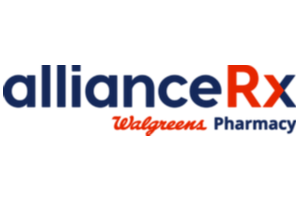SPONSORED CONTENT
The 340B program, enacted in 1992, enables covered entities to stretch scarce federal resources as far as possible, reaching more eligible patients and providing more comprehensive services.
In 2010, the 340B program was expanded under the Affordable Care Act, allowing covered entities to contract with an unlimited number of contract pharmacies such as Walgreens to provide 340B discount drugs.
Since July 2020, over 25 unique drug manufactures have imposed restrictions impacting and limiting access to contract pharmacy arrangements. A deeper dive of these 340B restrictions are shared below.
- Claims Data Upload – Most manufacturers have partnered with 340B ESP to require covered entities to upload 340B claims data to access to their contract pharmacy network. Claims upload must follow a standardized format as required by 340B ESP or the manufacturer and uploaded at a recurring cadence to avoid disruption to 340B pricing access. Covered entities who are considering this option should seek counsel from within their organization to assess both the positive and negative benefits of this action.
- Single Contract Pharmacy – Most manufacturers are allowing covered entities without an in-house pharmacy to add a single contract pharmacy without the requirement to upload claims data. A few manufacturers are allowing covered entities to add a single contract pharmacy in addition to their in-house pharmacy with 340B claims data uploaded to 340B ESP or the manufacturer in the required format. Covered entities who are considering this option will need to review their contract pharmacy options, such as Walgreens, and register their single contract pharmacy with 340B ESP or the manufacturer as well as the HRSA OPAIS system.
- Claims Limitation – Manufacturers that are requiring the upload of 340B claims data are limiting claims to be uploaded no later than 45 or 60 days of its adjudication date. Covered entities that have elected to upload this data must ensure claims are within the required date range and format to maintain access to 340B pricing.
- Proximity conditions – Lastly, a few manufacturers have imposed proximity restrictions on contract pharmacies. This restriction requires a contract pharmacy or multiple contract pharmacies to be within a 40-mile radius of the covered entity.
Recently, manufacturers have revised their 340B notices to include a blend of these restrictions, requiring covered entities to select a single contract pharmacy, within a 40-mile radius, and upload claims data within the required date range. This blended format has placed increased pressure on covered entities, limiting their ability to contract and leverage the many patient services and unique drugs available at contract pharmacies including Walgreens.
As covered entities review their 340B program, these manufacturer restrictions should be considered to determine the appropriate path that best meets their patients and organization’s needs.
Checklist for covered entities
As covered entities reflect on the current state of 340B, here are a few suggestive steps to help monitor and improve their current program.
- First, review the current program and look for opportunities to unlock value. This can include a periodic review of different wholesaler accounts to ensure pricing is correct. Qualified and non-qualified locations should also be reviewed to ensure the Third-Party Administrator (TPA) is receiving comprehensive data files to maximize 340B capture.
- Next, identify areas where complete and appropriate transparency into the program is not available. Ensure access to the right data at the right time to help maintain a compliant program and make informed decisions.
- Third, review current vendor relationships and determine if access to tools and platforms that benefit the program and covered entity are available and included.
- Fourth, implement a comprehensive strategy to provide oversight of the program. Consider implementing a 340B focused steering committee comprised of various segments of the organization to monitor all facets of the program.
Finally, establish accountability and periodic reviews of the program. Consider routine audits of the program to maintain compliance and develop short- and long-term goals for the program to allow for growth and expansion.
Partnerships to success
As the 340B industry continues to experience Volatility, Uncertainty, Complexity, and Ambiguity, look for partners:
- That will enhance visibility of the program at a micro and macro level and provide data and insights to help make the right decision at the right time.
- That can help expand the program with improved data transparency, unlocking of drug and payer networks, and consultative services that maintain real-time feedback on a shifting industry.
- That help maximize opportunities by applying focus on what matters to all stakeholders within the 340B ecosystem.

Robin George is director of Strategic Solutions and Account Management at AllianceRx Walgreens Pharmacy. He can be reached at robin.george@alliancerxwp.com.




